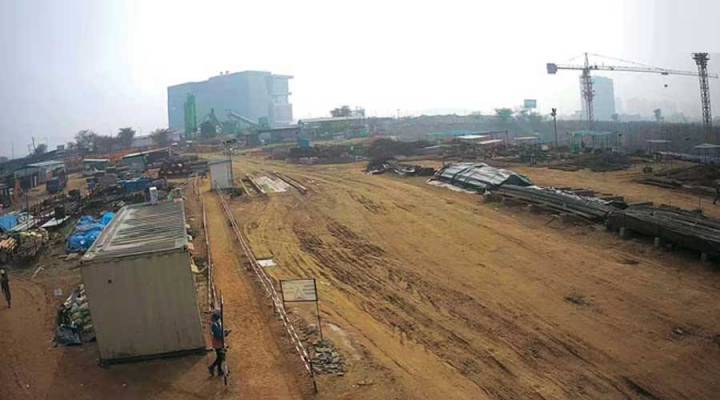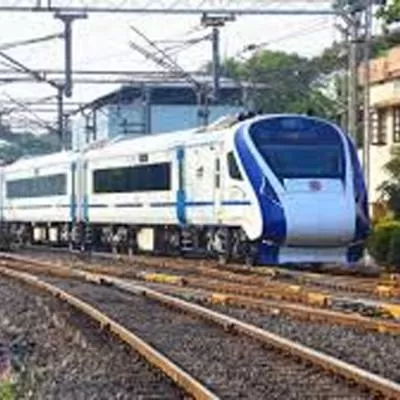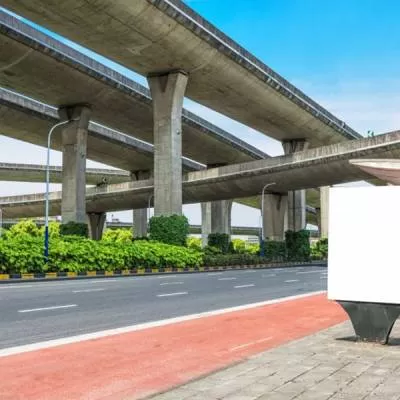Schedule a Call Back
A Lean Solution
2019-03-01

Are Indian companies easily adapting to Lean construction for projects?
CW has some answers.
Inefficiency and wastage in the construction sector are estimated to be 50-60 per cent abroad ? the number is likely to be higher in India. ?Lean? construction focusses on the continuous process of eliminating waste across the entire value stream in the execution of a project.
In June 2016, CW reported how India?s construction industry lacks a systematic construction process waste management system to guide the implementation of Lean construction. Three years on, are Indian companies beginning to adapt to this principle?
The concept
The Lean Construction Institute describes the concept as ?a new and transformational way to design and build capital facilities."
The goal is to make optimal use of critical resources in processes, including manpower, equipment, material, time and money, to avoid wastage and promote a cost-effective solution for project management, says Amit Uplenchwar, CEO, HCC Engineering & Construction. ?Lean practices are not just about minimising wastage at construction site but taking a holistic view of the project. To make the project more viable, Lean practices have to be implemented from the planning stage. These are guided by a culture of continuous improvements in construction quality, operational efficiency and safety standards.?
As Lean construction aims to reduce waste (man, machine and material) at fast-paced construction sites, it creates value. As SC Dixit, Executive Director, Shapoorji Pallonji Engineering & Construction, says, ?To reduce waste, Lean proposes unique tools such as Last Planner System (LPS), Value Stream Mapping (VSM), Crew Balance Chart (CBC), Just-in-Time (JIT), 5S Principle, Kaizen, etc.? Interestingly, Lean advocates a change of work culture, where planners require to shift to ?pull-based planning?.
For his part, Kamal Hadker, Chairman and Managing Director, Sterling Engineering Consultancy Services, iterates that if a project needs to be completed within budget and the defined timeframe, Lean construction should be applied right at the beginning. ?However, nobody stops you from using Lean principles during the progress of work,? he adds.
?It allows the economic use of resources and manpower.?
Increasing efficiency and productivity
The Lean construction principle calls for discipline. ?Everyone involved in the project ? client, architect, consultant, auditor, reviewers ? should decide on running the project efficiently,? emphasises Hadker. ?Hence, the flow of information, resources and everything is most economical.?
In the detailed engineering phase, value engineering optimises the judicious use of resources.
For example, the emphasis on planning and engineering has enabled HCC to devise alternate construction methods and schedules that reduce time, cost and delivery overruns, among others. The Lean construction approach is helping the company maximise value and minimise wastage in the areas of supply-chain management, logistics, software, and safety.
?In supply-chain management,? Uplenchwar says, ?it helps in reducing handling costs and on-site storage; enterprise resource planning (ERP) solutions, such as System Applications & Products (SAP), implemented at all HCC project sites; and material planning by offering flexibility as per the construction sequence and helping to overcome challenges during execution.? This, in turn, minimises idling time of equipment and material inventories, and makes operations more efficient. HCC follows the JIT inventory system that produces or acquires materials and products according to demand. This is a key component of its
supply chain.
While Shapoorji Pallonji Engineering & Construction has experimented with most Lean tools at many sites, LPS (for planning) and VSM (for plastering, bricklaying and concreting activities) are used extensively at commercial, residential and industrial sites.
?By using LPS, we have observed an increase in productivity for shuttering, reinforcement and concreting from 17-20 per cent to an overall 20 per cent in skilled and non-skilled manpower,? says Dixit. ?Coordinated (including subcontractor) implementation of LPS leads to a reduction of
8-12 days in slab cycle in some projects.? LPS implementation provides a clearer visibility of activity finish time (visible workflow) and helps create a predictable plan; on the other hand, VSM helps reduce the time required to finish a task and unnecessary manpower and machines.
BIM and other simulation software are used to create virtual renditions of actual projects. ?These tools have helped to
give a 3D view of the project, which aids in visualising the end-result, thus minimising a lot of unforeseen errors,? says Dr Ritesh Chandrashekar Tiwari, Director-Highways & Structures, Egis India. ?We are able to create user experiences virtually and try to find the best solutions for consumers.?
as storage space. Stakeholders of any project lose in the range of 20 per cent on cost due to such wastes, which can be avoided.? In agreement, Hadker points out that Lean helps save storage space at site. In India, machinery lies idle half the time but the cost gets loaded onto the project. As an example, he says, ?If I need 2,400 tonne of cement at an interval of a month, I would keep replenishing it rather than storing it. Then, I don?t need a large storage godown at site.? He recalls the time, when designing a hotel building, that he questioned the client whether they were sure the hotel rooms would be required by the time the project was complete.
?We then designed the building such that it could be used for a hotel and also converted into an office building. So, it is important that these things are embodied in the design itself.?
Lean-ready?
Lean is a journey and there are several levels of maturity in lead adoption. ?Indian companies have recognised the need to improve productivity through waste reduction,? believes Dr Koshy Varghese, Professor, Building Technology & Construction Management Division, Department of Civil Engineering, IIT-Madras. ?Leading companies have initiated their efforts towards Lean. But the industry is fragmented and it will take several years for all players to align their processes to the Lean-based approach.?
In Patil?s view, Indian companies are not yet adopting Lean. ?It is at a preliminary stage in India; however, a few construction giants are following Lean practices such as Last Planner (r) System (LPS), Big Room, Pull Planning, 5S, Kaizen, Building Information Modelling (BIM), etc. Lean is at an initial stage not only in India; it is not very effectively implemented in the US either.? He adds that ILCE is trying to create awareness about Lean at the government level, so that some level of participation from the government will help bring awareness and better practices in the industry. ?Let?s say, like in the UK, if it is made mandatory in India to provide all design submissions to the government as BIM models, it will be a good tool to detect a lot of design clashes. BIM helps as one of the tools of Lean construction.?
Barriers to implementation
What are the current barriers to the successful implementation of Lean construction? ?Short-sightedness is the biggest barrier,? believes Dr Tiwari. He elaborates: ?Companies cutting corners in the short term need to understand that construction is not a FMCG product. It lasts decades, if not centuries. Therefore, serious players need to look at Lean construction as an investment and a way of benchmarking themselves in the industry. Lean is an investment, not an expense. Once more companies realise this, the problem is addressed.? The Indian construction industry is relatively labour-intensive. Dealing with machines is way more formal than dealing with humans, says Dixit, ?which, in consequence, throws additional challenge to organisations to choose among process change or building on experiences of its traditional workforce.? He highlights identified hurdles during implementation as: Temporary multi-organisation ? execution team varying at every project; continuous inflow of unskilled labour and outflow of trained ones from various labour contractors; subcontractors? vision towards their own workforce;
lack of collaborative working of information sourcing teams (design consultants and PMCs) creating delay in timebound availability of desired changes and approvals; regularisations of changes as per frequent change in needs of customer restarts; information creation; and approval processes. As change is always inevitable, for Dixit, adopting a hybrid mechanism seems a way forward, ?where the industry trains its incoming workforce on new practices with the help of experienced hands, settling down differences faced during the adoption process.?
Steps forward
What would be the first step to implement Lean in construction companies? ?Recognising the waste in current processes and taking steps to identify and quantify it,? responds Dr Varghese. He adds that the government should structure contracts to include Lean-based approaches in project delivery and provide frameworks to support organisations to train people in Lean thinking. Patil, too, opines that the government should add Lean elements in the contractual process. ?Contractors should be made to give a Lean construction report on the savings encountered by implementing LPS, BIM, collaborative contracts, etc.?
Patil emphasises that Lean is a ?culture? that has to be embedded in your chain. ?Gradually, when companies see Lean being practiced and experience the benefits, contractors will become competitive about it and eventually benefits will pass on to developers.? Meanwhile, Uplenchwar emphasises that the success of Lean construction in any organisation depends on leadership commitment. ?It must start at the top and filter down to project teams working at construction sites.?
According to Hadker, the Indian construction industry will be quick to adopt Lean construction ?because it speaks for economy and efficiency and speed.? There are several players who are using cutting-edge tools to minimise human interventions,
says Dr Tiwari. ?And their numbers are growing.? As India aspires to global standards in infrastructure output, it?s clearly time to get Lean!
Lean Cases
When HCC was constructing the two-tier Bogibeel Bridge ? the country?s longest rail-cum-road bridge ? placing the 125-m long fully-welded steel spans, each weighing 1,700 tonne, on the pillars embedded in the riverbed was a challenge. ?On-site engineers had two choices for a more practical and economical method, either lifting the spans with floating cranes or erecting them with a launching truss,? shares Amit Uplenchwar, CEO, HCC E&C. ?After weighing the pros and cons, the team came up with a third solution of pulling the steel trusses with a set of jacks and winches on the pillars. This eliminated the need to enter the river. Besides, it also ensured safer working conditions, precluded the mobilisation of a giant setup on either side of the river and accelerated the project?s pace. The strategy proved testament to the global practice of Lean construction, which is changing the way projects are executed from design to construction.?
Shapoorji Pallonji Engineering & Construction has implemented Lean for an IT park spread over 40 acre with a built-up area of 3.5 m sq ft. It required coordination among 46 contractors having more than 2,000 workers at a time. ?The project was struggling with coordination issues within and among teams, and wastage of material and labour at the same time,? says SC Dixit, Executive Director, Shapoorji Pallonji Engineering & Construction. ?The implementation of Lean tools such as Last Planner System (LPS) helped in coordination and streamlining communication, while Value Stream Mapping (VSM) practices helped in reducing man days and improving productivity. Further, pull-based planning ensured optimistic targets, which is further reinforced by the rest of the tools, resulting in improved productivity; and a sense of waste reduction is nurtured in the team, which resulted in improved coordination and higher percentage plan completion.? At one of Tata Realty and Infrastructure?s recent projects in Gurugram, a large SEZ project of about 5 million sq ft, ?we have implemented Lean and created a Big Room,? says Prakash Patil, Secretary General, The Institute for Lean Construction Excellence, and Vice President-Projects, Tata Realty and Infrastructure. ?We are using the LPS, Pull Planning, BIM etc, extensively here.?


Subscribe Now
Subscribe to our Newsletter & Stay updated
RECENT POSTS
Popular Tags
Folliow us
Related Stories
Hindustan Zinc Saves GHG Emissions Equivalent to Powering 4 Lakh Homes
On Global Energy Independence Day, Hindustan Zinc, India’s only and the world’s largest integrated zinc producer, reaffir...
Gmmco, Caterpillar Host Global Operator Challenge 2025-26
Gmmco, a leading Cat® dealer in India and part of the CKA Birla Group, in collaboration with Caterpillar, has successfully hosted the India leg ...
IRB Infra and IRB Infrastructure Trust post 8 per cent Y-o-Y toll revenue growth in Q1 FY26
IRB Infrastructure Developers, India’s leading and largest multi-national transport infrastructure developer, along with its listed Private Inv...









